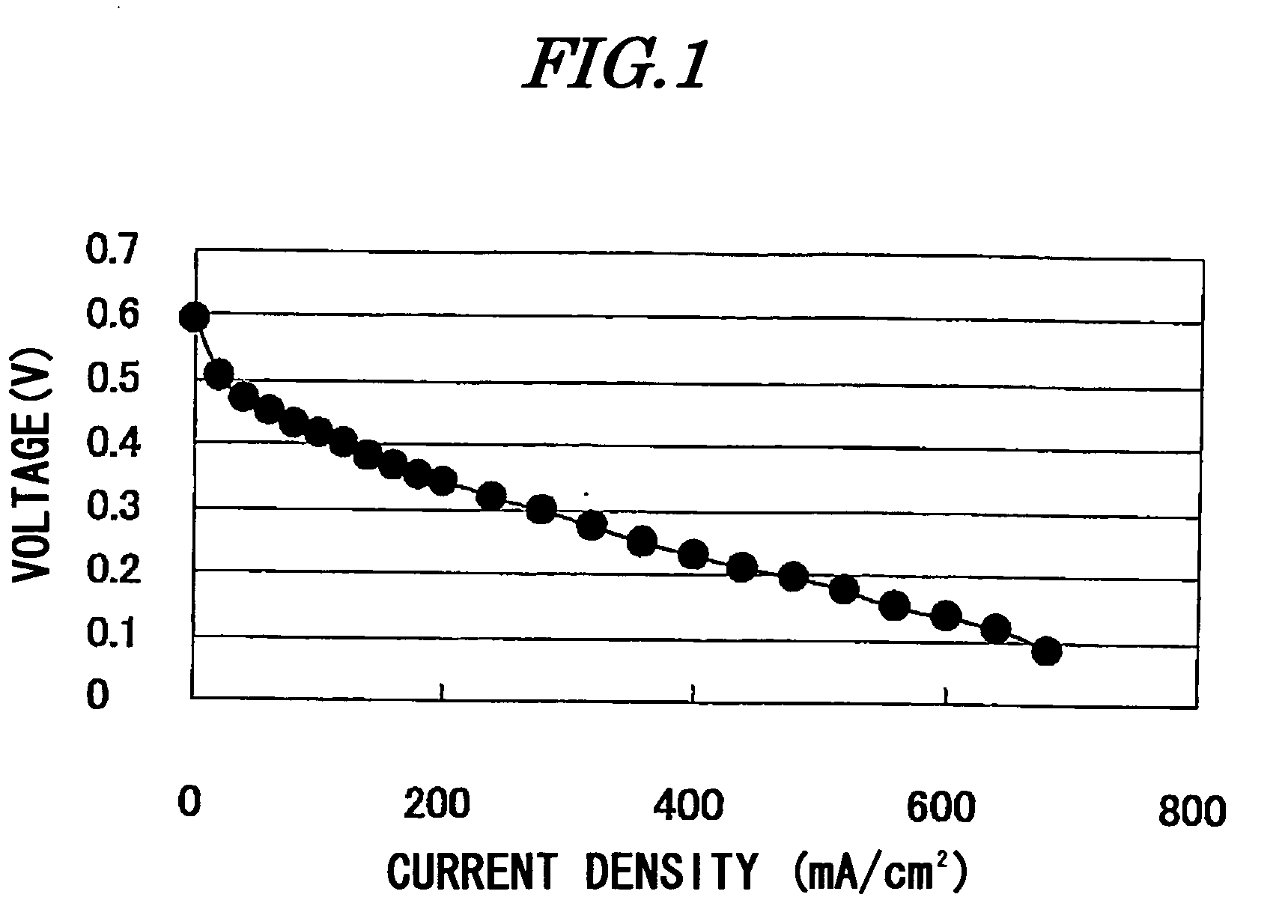Electrolyte Membrane and Fuel Cell Employing Said Electrolyte Membrane
a fuel cell and electrolyte technology, applied in the field of electrolyte membranes, can solve the problems of increasing production equipment costs, reducing the electrolyte force, and high cost of electrolyte membranes, and achieves excellent performance, high proton conductivity, and prevent the permeation of methanol
- Summary
- Abstract
- Description
- Claims
- Application Information
AI Technical Summary
Benefits of technology
Problems solved by technology
Method used
Image
Examples
example 1
[0065]As a porous substrate, a crosslinked polyethylene membrane (thickness 16 μm, porosity 38%) was used. The porous substrate was immersed in an aqueous monomer solution containing 45 parts of 2-acrylamido-2-methylpropanesulfonic acid, 5 parts of N,N′-ethylenebisacrylamide, 0.5 parts of a nonionic surfactant, 0.05 parts of 2-hydroxy-2-methyl-1-phenylpropan-1-one, and 50 parts of water, thus filling the porous substrate with the aqueous solution. Subsequently, after the porous substrate was pulled out of the solution, it was irradiated with ultraviolet rays using a high-pressure mercury lamp for 2 minutes to thus polymerize the monomer within the pores and give an electrolyte membrane. The results of evaluation of the membrane thus obtained are given in Table 1.
synthetic example 1
[0066]A four-necked flask was charged with a mixture of 150 g of acetonitrile and 5 g of acryloyl chloride, and stirred while maintaining it at 5° C. or less in an ice bath. A mixture of 100 g of acetonitrile and 3.7 g of propylenediamine was added dropwise little by little to the mixture within the flask while maintaining it at 5° C. or less. After completion of the dropwise addition, the ice bath was removed and stirring was carried out at room temperature for 5 hours. A precipitate formed in the reaction solution was removed by filtration, and when the filtrate was concentrated, crystals were deposited, and they were filtered and dried to give N,N′-propylenebisacrylamide.
example 2
[0067]An electrolyte membrane was obtained in the same manner as in Example 1 except that the N,N′-propylenebisacrylamide obtained in Synthetic Example 1 was used instead of N,N′-ethylenebisacrylamide. The results of evaluation of the membrane thus obtained are given in Table 1.
PUM
| Property | Measurement | Unit |
|---|---|---|
| weight % | aaaaa | aaaaa |
| weight % | aaaaa | aaaaa |
| weight % | aaaaa | aaaaa |
Abstract
Description
Claims
Application Information
 Login to View More
Login to View More - R&D
- Intellectual Property
- Life Sciences
- Materials
- Tech Scout
- Unparalleled Data Quality
- Higher Quality Content
- 60% Fewer Hallucinations
Browse by: Latest US Patents, China's latest patents, Technical Efficacy Thesaurus, Application Domain, Technology Topic, Popular Technical Reports.
© 2025 PatSnap. All rights reserved.Legal|Privacy policy|Modern Slavery Act Transparency Statement|Sitemap|About US| Contact US: help@patsnap.com



